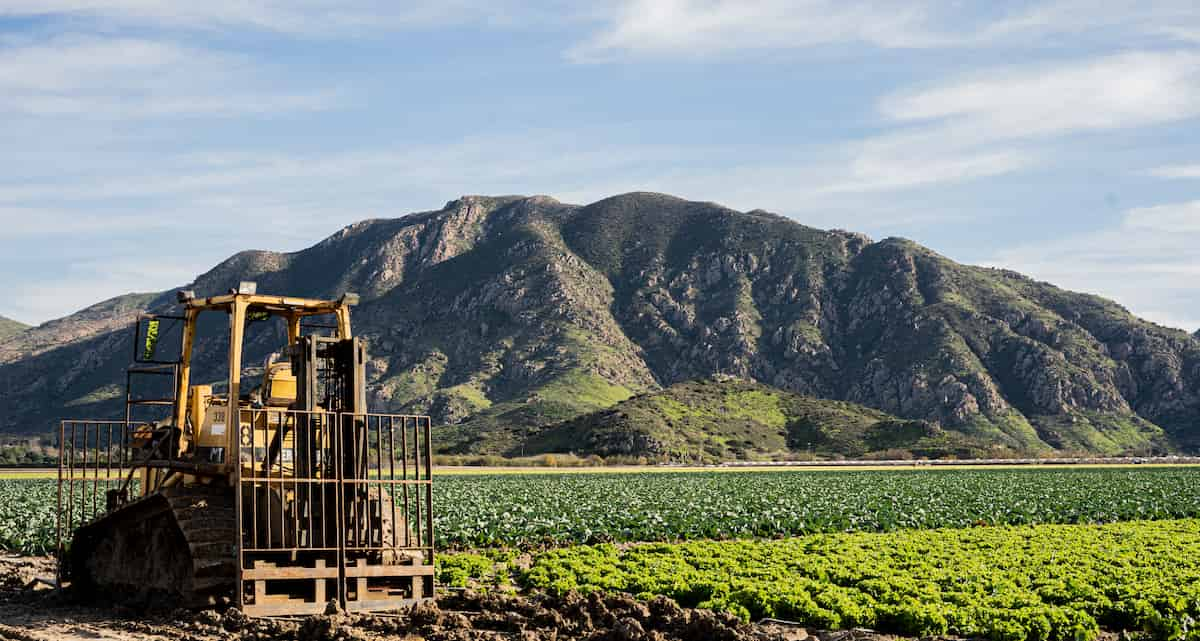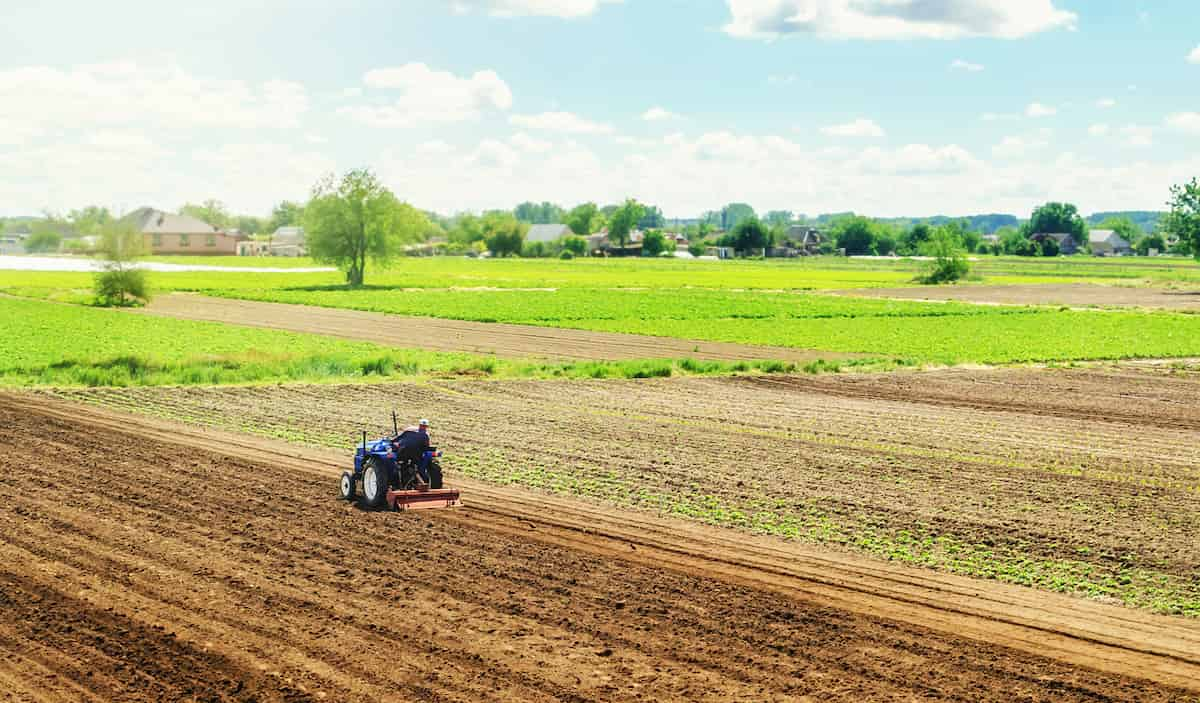Intercropping is a cropping practice in which two or more crops are planted in a specific row arrangement on the same plot of land to maximize production. Small farmers that rely on rainfall for agricultural output widely employ this strategy. The primary goal of intercropping is to maximize the use of all resources to boost crop output. Intercropping crops include soybean and maize, finger millet, and cowpea. This farming strategy increases crop output from a fixed land area, making it appealing to small farmers.

Intercropping and mixed cropping
Types of intercropping
Intercropping is a strategy for increasing productivity in which various crops are cultivated simultaneously on the same plot of land in a precise manner. Row planting, Strip Cropping, mixed intercropping, and relay planting are the Four basic methods of intercropping.
- Row cropping: Planting two or more vegetable plants in alternate rows.
- Relay cropping is the practice of planting a fast-growing crop alongside a slow-growing crop such that one crop develops before the other. It is also called Temporal intercropping. As an example, rice-cauliflower-onion-summer gourds.
- Mixed intercropping is a fundamental technique in which two or more crops are mixed and seeded on the field.
- Strip cropping is the practice of growing two or more crops in wide strips so they may be maintained separately.
Benefits/advantages of intercropping
- Intercropping can provide agronomic benefits, considering soil, climate, and crop type.
- Intercropping promotes pest management and biodiversity using trap cropping, repellent intercropping, and push-pull cropping.
- Intercropping also improves resource usage, lowers crop failure risk, optimizes space and time, and increases output.
- Intercropping helps in weed management, soil fertility maintenance, erosion prevention, and the prevention of soil crust development.
- Intercropping generates additional income, meets farmers’ daily needs, and expands agricultural employment opportunities.
- Intercropping can also contribute to a more stable ecosystem by including complementing crops and management practices for the primary crop. Certain crops benefit from shade and physical assistance.
What is mixed cropping?
Mixed cropping is a method of growing many crops at the same time. Mixed cropping is a method of agriculture in which two or more crops are cultivated in the same area in a random pattern or arrangement. The primary goal of mixed cropping is to promote soil fertility, crop diversification, and, eventually, crop yields.
In case you missed it: Mulberry Farming in India: Growing Requirements, Trees Per Acre, Crop Duration, Planting Methods, and Yield

This cropping strategy can also help to prevent crop failure due to poor weather conditions where one line of a legume crop and another line of a main crop are planted. The main crop takes nitrogen from the soil. At the same time, the legume replenishes it by fixing nitrogen in the form of nitrates in its root nodules. It helps maintain soil fertility and allows farmers to produce large crops without depleting the soil’s nitrogen content.
The advantages/benefits of mixed cropping
- Improved soil fertility: Mixing cropping promotes soil fertility by fixing nitrogen and restocking the soil with necessary nutrients.
- Increased yield: Growing numerous crops simultaneously might result in a better yield since one crop aids in the growth of the others.
- Reduced pest and disease pressure: Because one crop functions as a natural shield to protect the other, mixed cropping can lessen the demand for pesticides.
- A wide range of produce: Offers diversity and variety in crops grown, leading to a more nutritious diet and the option to sell different crops.
- Lower chances of crop failure: Reduces the risk of failure due to weather or pests by growing multiple crops in one field.
- Improved weed management: Competition between crops limits weed growth and reduces the need for herbicides.
Mixed cropping examples
Wheat and mustard can be planted together in the same area to boost soil fertility and crop production. Beans, maize, and cucumbers: A typical example of mixed cropping, commonly known as the “Three Sisters.” These crops were cultivated in various eras, but they were eventually combined to constitute a significant element of Native American agriculture and diet.
Differences between intercropping and mixed cropping
| Parameters of Comparison | Mixed Cropping | Intercropping |
| Definition | Growing two or more crops in the same field, often with no specific arrangement or pattern. | Growing two or more crops in the same field in a specific arrangement or pattern. |
| Feature | Mixed Cropping | Intercropping |
| Purpose | Avoid crop failure | Optimal utilization of space |
| Pattern | No particular pattern | Specific row pattern |
| Sowing | Seeds mixed and sowed | Seeds sowed separately in pattern |
| Fertilizers/Pesticides | Same for all crops | Used separately for each crop |
| Duration/Maturity/Lifecycle | Varied among crops | Similar among crops |
| Harvest/Sale | Harvested and sold together | Harvested and sold separately at different times |
Mixed cropping involves growing two or more crops in the same field with no specific arrangement, while intercropping involves growing two or more crops in the same field in a specific arrangement or pattern. Both methods have advantages, such as improved resource utilization, reduced pest pressure, and increased yields, but can also have disadvantages, such as competition for resources in the case of mixed cropping and more careful planning and management required in the case of intercropping.
What is crop rotation?
Crop rotation is a way to improve the health of the soil, get the most out of the nutrients, and protect against pests and weeds. It requires cultivating various crops in the same site throughout many growing seasons. By not cultivating the same crops in the same site in successive years, crop rotation lowers nutrient depletion and pest infestations. Legumes (peas and beans), nightshades (tomatoes, eggplant, and peppers), chicories (lettuce and endive), and umbels are all regularly cycled crops (carrots and parsley).
In case you missed it: Top 20 Most Profitable Crops to Grow: High Yield and Low Maintenance

Selection criteria for crops in rotation
- Moisture availability
- Availability of fertilizers, human resources, and machine-power
- Marketing and processing facilities
- Availability of nutrients in the soil
- Crop duration
Advantages of crop rotation
Crop rotation is the practice of producing various crops in the same location across many seasons. It has several advantages.
- Promoting soil fertility and nutrient efficiency,
- Reducing plant diseases and insect pests,
- Weed control, soil erosion, and soil health.
- Crop rotation allows farmers to spread their workload, reducing environmental resource use and producer time efficiency.
- Crop rotation gives soil bacteria varied food sources, improving soil structure. Plant roots hold the top layer of soil together,
- Reducing water erosion and raindrop impact.
- Crop rotation interrupts insect life cycles and habitats, reducing plant infection.
- Finally, legume cover crops may provide a lot of nitrogen during crop rotation.
Conclusion
Intercropping and mixed cropping are both methods of growing multiple crops in the same field, with intercropping being the planting of different crops in between rows of a main crop and mixed cropping, the planting of different crops in the same field without distinct rows. Both have benefits, such as higher crop yields, fewer pests and diseases, and healthier soil.
- Feed Your Flock for Less: Top 10 Tips to Save on Chicken Feed
- Ultimate Guide to Ossabaw Island Hog: Breeding, Raising, Diet, and Care
- Hatching Answers: The Top 10 Reasons Your Chickens Aren’t Laying Eggs
- Eggs and Economics: Breaking Down the Cost of Raising Backyard Chickens
- Defend Your Greens: Proven Methods to Keep Iguanas Out of Your Garden
- Ultimate Guide to Cinnamon Queen Chicken: A Comprehensive Guide for Beginners
- Ultimate Guide to California Tan Chicken: Breeding, Raising, Diet, Egg-Production and Care
- Ultimate Guide to Marsh Daisy Chicken: Breeding, Raising, Diet, and Care
- 10 Types of Chicken Farming Businesses You Can Start for Profits